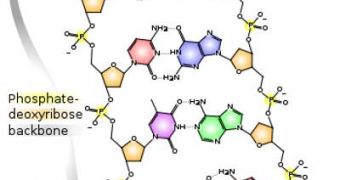Experts at the University of Manchester have made an important breakthrough in studying the origins and evolution of life, when they synthesized the basic elements of ribonucleic acid (RNA), the connecting link between pre-biotic molecules and the deoxyribonucleic acid (DNA). The find is very important because, until now, no one could say for sure exactly how these molecules were formed, or how it was that they came to make up the RNA in the first place. Over the years, many researchers have tried to use the basic components of the RNA to synthesize the molecule, but their attempts have all failed.
In previous experiments, scientists from various research institutes sought to employ ribonucleotides – the basic components of RNA – to synthesize the elusive substance. They used a sugar, a phosphate, and one of four different nitrogenous molecules (nucleobases) that could be found in the acid, but, no matter how hard they tried, all their attempts came up short of forming RNA. UM researchers believe that their colleagues went about forming the ribonucleic acid the wrong way, and propose an alternative way of synthesizing it.
“It’s like molecular choreography, where the molecules choreograph their own behavior. By changing the way we mix the ingredients together, we managed to make ribonucleotides. The chemistry works very effectively from simple precursors, and the conditions required are not distinct from what one might imagine took place on the early Earth,” UM Organic Chemist John Sutherland explained. He is also a co-author of the new study detailing the method, published Wednesday in the journal Nature.
Rather than mixing all the ingredients together, the UM team only mixed sugars and nucleobases, in an array of very simple molecules, which were most likely also found in the “primordial soup.” They then heated the mix, and allowed everything to evaporate, then added water and heated it again. In the late stages, they irradiated the mix and then added phosphate, Wired reports. “Remarkably, it transformed into the ribonucleotide!” Sutherland shared.
According to the research, which again proves that Charles Darwin's theory of evolution is correct, the proverbial primordial soup “evaporated, got heated, and then it rained and the sun shone.” This is something that has a great deal of chances of happening on Earth. It may have taken a while to get to that point, but the tiny acid strands did so, nevertheless, and are now the basic messengers inside just about every living thing.

 14 DAY TRIAL //
14 DAY TRIAL //